Dealing with Energy Poverty – Role of Green Energy Solutions
Energy poverty is a pressing issue that affects millions of people around the globe, leaving them in the dark—literally and metaphorically. Imagine living in a world where basic needs like heating, cooling, or even cooking are luxuries rather than necessities. This is the harsh reality for many, particularly in developing countries, where access to reliable energy sources is limited. In this article, we will explore the impact of energy poverty and how green energy solutions can provide sustainable relief. By diving into various strategies, benefits, and challenges, we aim to shed light on this critical issue and how we can tackle it effectively.
So, what exactly is energy poverty? In simple terms, it refers to a situation where individuals or communities cannot access affordable and reliable energy services. It’s not just about having electricity; it encompasses the ability to heat homes, power appliances, and access clean cooking facilities. The causes are multifaceted, ranging from economic constraints to inadequate infrastructure. The consequences can be dire, leading to health problems, limited educational opportunities, and stunted economic growth. The significance of addressing energy poverty cannot be overstated, especially in the context of socioeconomic development. Without energy, communities struggle to thrive, and the cycle of poverty continues.
Enter green energy solutions—the superheroes of the energy world! These sustainable alternatives to fossil fuels, including solar, wind, and hydroelectric power, have the potential to change the game for energy-poor communities. Not only do they provide clean energy, but they also promote environmental sustainability. Each type of green energy technology brings its unique advantages and challenges, but collectively, they can create a brighter future for those affected by energy poverty.
Among the various green energy solutions, solar energy initiatives are gaining traction as a powerful weapon against energy poverty. Imagine harnessing the sun's rays to power homes and businesses—it's both innovative and effective! Numerous successful solar projects have emerged worldwide, demonstrating the profound impact they can have on communities lacking reliable energy access. These initiatives are not just about sustainability; they also focus on affordability. By reducing energy costs, solar projects empower individuals and families, allowing them to allocate resources to other essential needs.
One of the standout features of solar energy initiatives is the rise of community solar programs. These programs enable collective investment in solar energy, allowing participants to share the benefits. Think of it as a community potluck, but instead of food, everyone contributes to a solar array! This model not only reduces costs for participants but also fosters a sense of community and resilience. By empowering communities to take charge of their energy needs, these programs pave the way for a more inclusive energy landscape.
For remote areas where traditional energy infrastructure is lacking, off-grid solar solutions offer a lifeline. These innovative technologies provide reliable power to underserved populations, enhancing their quality of life and opening doors to economic opportunities. Imagine a small village that relies on kerosene lamps for light—now picture that same village illuminated by solar panels. This transformation is not just about light; it’s about hope, progress, and a brighter future.
Wind energy is another promising solution in the fight against energy poverty. With the ability to generate clean, affordable electricity, wind projects can be a game-changer for vulnerable communities. However, the feasibility of these projects varies by region, depending on wind availability and infrastructure. By analyzing different regions, we can identify areas where wind energy can thrive, providing yet another avenue for sustainable energy access.
Despite the myriad benefits of green energy solutions, several barriers hinder their widespread adoption. Financial constraints, lack of infrastructure, and regulatory hurdles are just a few of the challenges that must be addressed. It's like trying to run a marathon with a backpack full of rocks—progress is possible, but it's incredibly difficult!
When it comes to implementing green energy solutions, financial challenges are often the biggest roadblocks. Many communities simply lack the funds needed to invest in sustainable energy projects. However, there are funding options, grants, and innovative financing models available that can support these initiatives. By exploring these avenues, we can unlock the potential of green energy in impoverished areas.
Policy and regulatory issues can also impede the growth of green energy initiatives. Supportive policies, incentives, and regulations are crucial for promoting investment in renewable energy. By advocating for change at the policy level, we can create an environment where green energy solutions can flourish, ultimately benefiting energy-poor communities.
The future of energy poverty solutions relies on innovative approaches and collaboration. Emerging trends, technologies, and partnerships hold the key to driving progress in addressing energy poverty through green energy. As we look ahead, it’s essential to remain optimistic and proactive in our efforts. Together, we can create a world where energy poverty is a thing of the past, and everyone has access to the energy they need to thrive.
- What is energy poverty? Energy poverty refers to the lack of access to affordable and reliable energy services, affecting millions globally.
- How can green energy help alleviate energy poverty? Green energy solutions, like solar and wind power, provide sustainable and affordable alternatives to traditional energy sources.
- What are community solar programs? Community solar programs allow groups of people to invest in solar energy collectively, sharing the benefits and reducing costs.
- What challenges do green energy projects face? Financial constraints, lack of infrastructure, and regulatory hurdles are significant barriers to the adoption of green energy solutions.

Understanding Energy Poverty
Energy poverty is a pressing issue that affects millions of people around the globe, creating a significant barrier to socioeconomic development. It refers to the lack of access to modern energy services, which can include electricity, clean cooking facilities, and heating. Imagine living in a world where the simple act of flipping a switch to turn on a light is a luxury you can’t afford. This stark reality is what many individuals and families face daily, particularly in developing nations where energy resources are scarce or prohibitively expensive.
The causes of energy poverty are multifaceted and often interlinked. Some of the primary factors include economic constraints, where low-income households struggle to pay for energy services; geographical isolation, which limits access to energy infrastructure; and political instability, which can disrupt energy supply chains. Additionally, the reliance on traditional biomass fuels, like wood and charcoal, poses serious health risks and environmental challenges.
Moreover, the consequences of energy poverty extend beyond mere inconvenience. It can lead to a vicious cycle of poverty, where lack of energy access hampers education, healthcare, and economic opportunities. For instance, children studying by candlelight are at a disadvantage compared to their peers with reliable electricity. Furthermore, households without access to clean energy sources often resort to burning fossil fuels, contributing to air pollution and health problems.
To paint a clearer picture, consider the following statistics:
| Region | Percentage of Population Lacking Electricity |
|---|---|
| Sub-Saharan Africa | 58% |
| South Asia | 30% |
| East Asia | 6% |
As we delve deeper into the significance of addressing energy poverty, it becomes clear that improving energy access is not just about providing electricity; it’s about empowering communities. By bridging the energy gap, we can unlock a plethora of opportunities, enhancing quality of life and fostering sustainable economic growth. In the following sections, we will explore how green energy solutions can play a pivotal role in alleviating this critical issue.
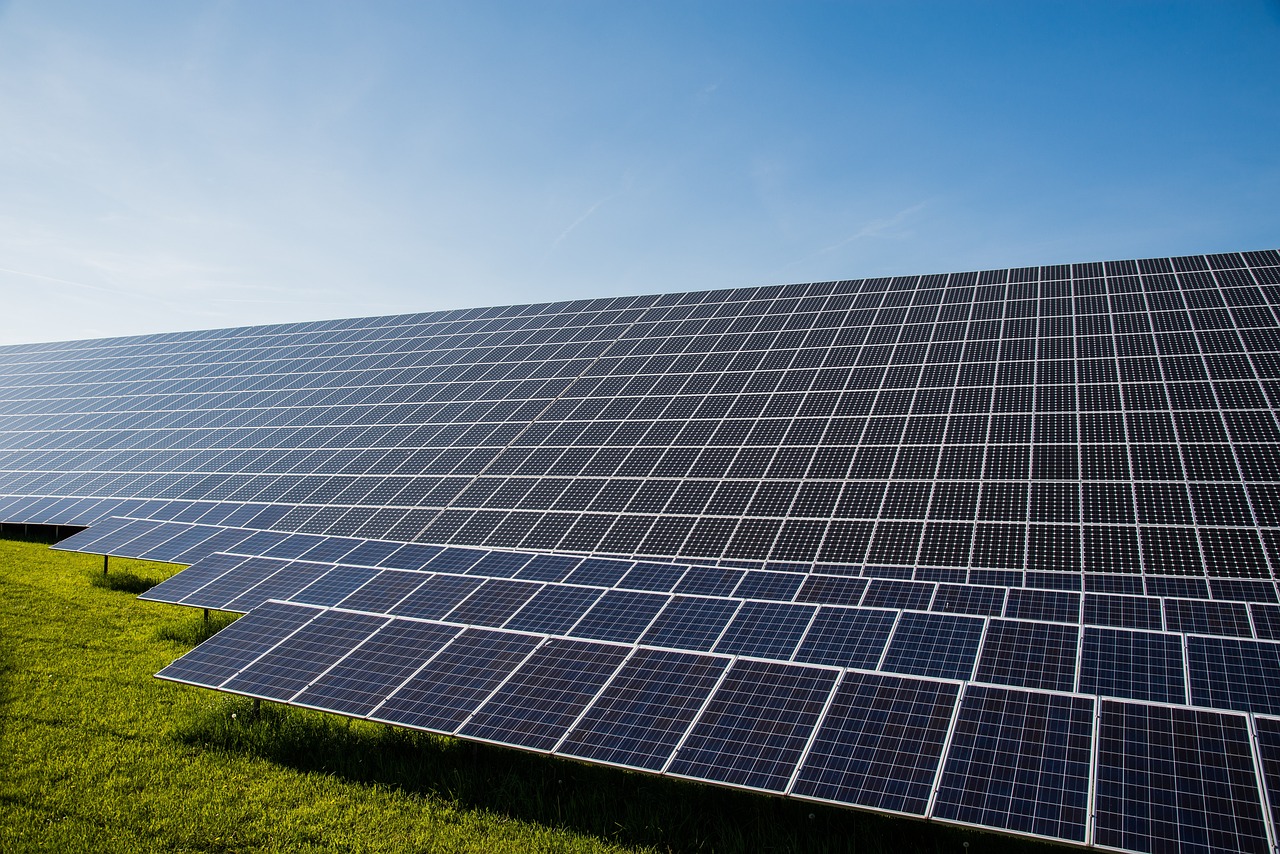
Green Energy Solutions Overview
In the quest to tackle energy poverty, green energy solutions have emerged as a beacon of hope, providing sustainable alternatives to traditional fossil fuels. These solutions not only help combat climate change but also empower communities by ensuring access to reliable energy sources. With a variety of technologies available, including solar, wind, and hydroelectric power, the potential for transforming energy access is immense. Each of these technologies harnesses natural resources, offering a cleaner, more sustainable way to generate electricity.
Solar energy, for instance, utilizes the sun's rays to produce electricity, making it one of the most accessible forms of green energy. It can be deployed on a small scale, such as rooftop panels for individual homes, or on a larger scale with solar farms that supply power to entire communities. Wind energy, on the other hand, captures the kinetic energy from wind currents through turbines, generating electricity that can be fed into the grid or used locally. Hydroelectric power leverages the flow of water to produce energy, often resulting in large-scale power generation. Each of these sources has unique advantages, but they share a common goal: to provide clean, affordable energy to those who need it most.
One of the key benefits of green energy solutions is their ability to create local jobs and stimulate the economy. The installation and maintenance of renewable energy systems often require skilled labor, which can lead to job creation in communities that may have limited employment opportunities. Furthermore, these technologies can help stabilize energy prices, protecting vulnerable populations from the volatility of fossil fuel markets. By investing in green energy, we are not only addressing immediate energy needs but also fostering long-term economic resilience.
However, the transition to green energy is not without challenges. For many communities, the initial costs of implementing renewable energy systems can be prohibitive. Despite the long-term savings on energy bills, the upfront investment can deter individuals and local governments from making the switch. This is where innovative financing models come into play, offering solutions such as community solar programs and off-grid systems that can alleviate financial burdens while promoting inclusivity.
In summary, the overview of green energy solutions reveals a landscape rich with potential. By harnessing the power of renewable resources, we can not only combat energy poverty but also pave the way for a more sustainable future. As we delve deeper into specific technologies and initiatives, it becomes clear that the path toward energy equity is illuminated by the promise of green energy.
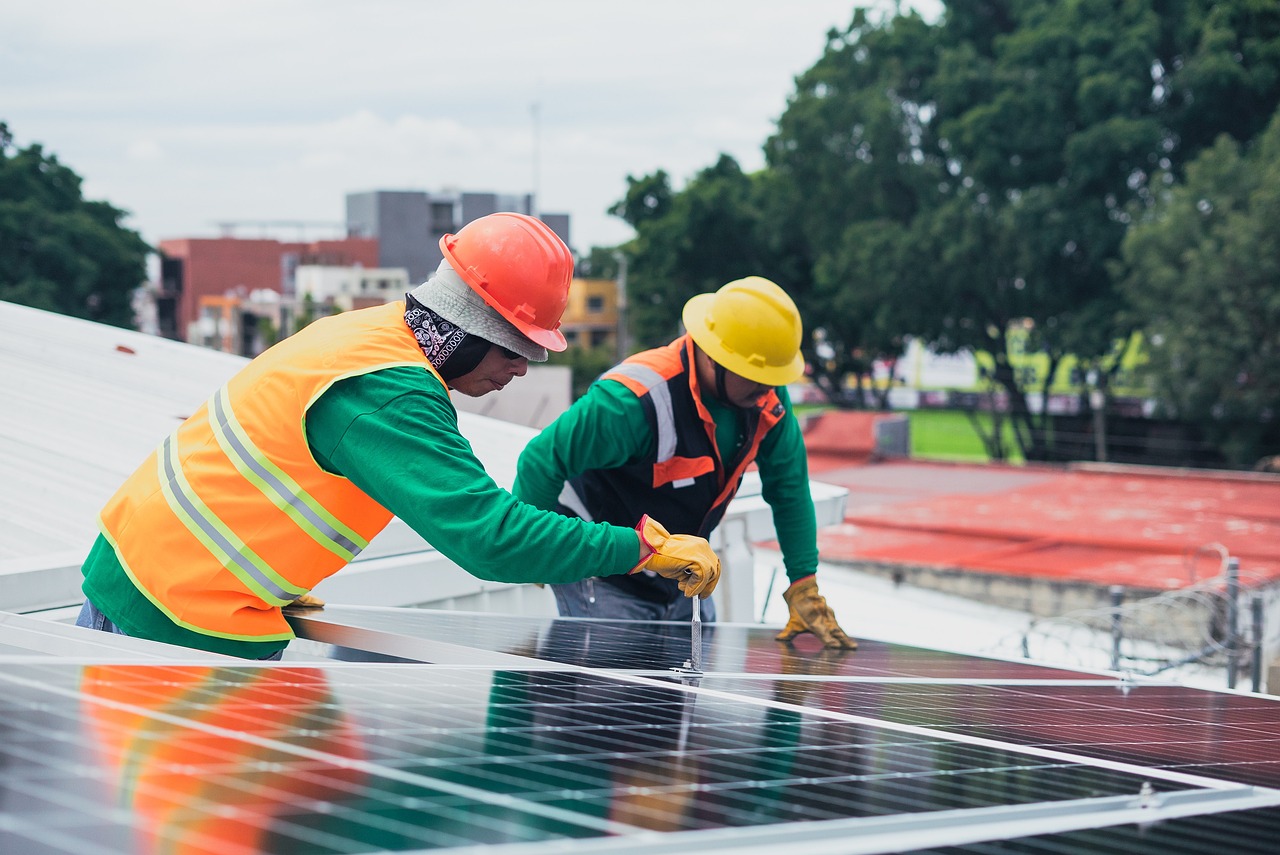
Solar Energy Initiatives
In the battle against energy poverty, have emerged as a beacon of hope, illuminating the path toward sustainable and affordable energy access for all. These initiatives are not just about harnessing the sun's power; they represent a transformative approach to energy generation that prioritizes inclusivity and resilience, especially in communities that have long been left in the dark. Imagine a village where families no longer rely on expensive and unreliable energy sources—this is the reality that solar projects are creating.
One of the most compelling aspects of solar energy initiatives is their ability to adapt to various community needs. For instance, in regions where grid electricity is non-existent or unreliable, solar panels can be installed on rooftops or in community solar farms, providing a direct source of clean energy. This not only reduces dependence on fossil fuels but also cuts down on energy costs, allowing families to allocate their limited resources to other essential needs, such as education and healthcare. The affordability of solar technology has made it an attractive option, with costs dropping significantly over the past decade. According to recent data, the price of solar panels has decreased by over 80% since 2010, making them a viable solution for even the most economically challenged regions.
Moreover, successful solar projects have demonstrated the profound impact they can have on communities. For example, in countries like India and Kenya, solar energy initiatives have empowered local populations by creating jobs in installation and maintenance, fostering economic growth. These projects often involve training programs that equip individuals with the skills necessary to work in the renewable energy sector, thus creating a sustainable cycle of employment and energy independence. In this way, solar initiatives do not merely provide energy; they also build community capacity and resilience.
To further illustrate the effectiveness of solar energy initiatives, let’s take a look at a few notable projects:
| Project Name | Location | Impact |
|---|---|---|
| Solar Sister | Africa | Empowers women entrepreneurs to distribute solar products, enhancing access to clean energy. |
| Solar Microgrid Project | India | Provides reliable electricity to remote villages, improving living standards and economic opportunities. |
| Community Solar Gardens | USA | Allows residents to invest in shared solar power, lowering energy bills and increasing local energy resilience. |
In conclusion, solar energy initiatives are a powerful tool in the fight against energy poverty. By providing access to clean, affordable energy, they not only improve the quality of life for countless individuals but also promote economic development and environmental sustainability. As we move forward, it is crucial to support and expand these initiatives to ensure that no one is left behind in the transition to a sustainable energy future.
- What is energy poverty? Energy poverty refers to the lack of access to reliable and affordable energy services, which can severely impact daily life and economic opportunities.
- How do solar energy initiatives help communities? They provide clean energy, reduce costs, create jobs, and empower local populations through training and capacity building.
- Are solar panels affordable for low-income families? Yes, the cost of solar panels has significantly decreased, and various financing options and subsidies are available to make them more accessible.
- Can solar energy projects operate in remote areas? Absolutely! Off-grid solar solutions are specifically designed to provide energy independence to remote and underserved communities.
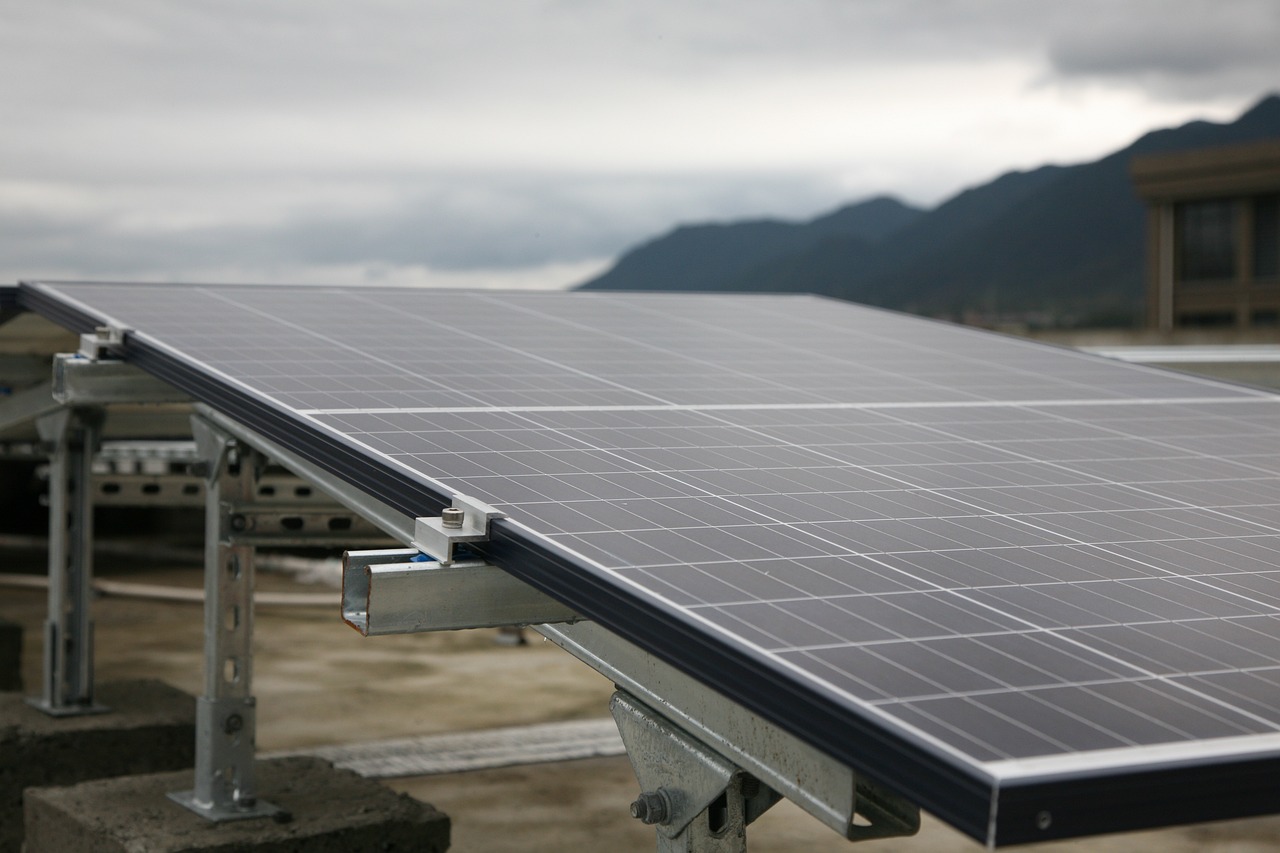
Community Solar Programs
Community solar programs are revolutionizing the way we think about energy access, especially for those who have been left in the dark—literally and figuratively. Imagine a neighborhood where residents can band together, pooling resources to harness the power of the sun. These initiatives allow individuals who may not have the means to install solar panels on their own rooftops to benefit from renewable energy. It's like sharing a pizza; everyone gets a slice of the delicious energy savings without having to cook the whole thing themselves!
At the heart of community solar programs is the concept of shared solar energy. Participants invest in a solar array that is typically located off-site, and in return, they receive credits on their electricity bills based on the amount of energy produced. This model not only fosters a sense of community but also promotes inclusivity. It empowers low-income households and renters who often face barriers to traditional solar installations, such as high upfront costs or unsuitable housing conditions.
One of the standout benefits of community solar programs is their ability to lower energy costs for participants. By collectively investing in solar infrastructure, communities can negotiate better rates and reduce the financial burden on individual households. According to recent studies, participants in community solar programs can save anywhere from 10% to 30% on their energy bills. It's a win-win situation where clean energy meets economic relief!
However, it's essential to recognize that not all community solar programs are created equal. The success of these initiatives often hinges on effective management and local support. For instance, programs that prioritize transparency and community involvement tend to yield better results. When residents feel engaged and informed, they are more likely to participate actively, ensuring the program's longevity and success.
To illustrate the impact of community solar programs, let's take a look at a few successful examples:
| Program Name | Location | Participants | Annual Savings |
|---|---|---|---|
| Solarize | California | 500 | $150,000 |
| Community Solar Garden | New York | 300 | $90,000 |
| SunShare | Colorado | 1,000 | $250,000 |
As you can see, community solar programs not only bring people together but also deliver tangible financial benefits. They serve as a beacon of hope, showing that renewable energy can be accessible and affordable for everyone, regardless of their socioeconomic status. With the right support and investment, these programs can pave the way for a sustainable energy future.
In conclusion, community solar programs are a shining example of how collective action can combat energy poverty. By harnessing the power of the sun, communities can create a brighter, more sustainable future for all. So, if you’re considering ways to make a difference in your community, why not explore the possibility of starting a community solar initiative? Together, we can illuminate the path to energy equity!
- What is a community solar program? A community solar program allows multiple participants to invest in a shared solar energy system, providing them with credits on their electricity bills based on the energy produced.
- Who can participate in community solar programs? Typically, anyone can participate, including renters and low-income households, making renewable energy accessible to those who may not have the ability to install solar panels on their properties.
- How do I find a community solar program near me? You can search online for local community solar initiatives or contact your utility company for information on available programs in your area.
- Are there any costs associated with joining a community solar program? While some programs may require an initial investment, many offer flexible payment options, and participants often see savings on their energy bills.
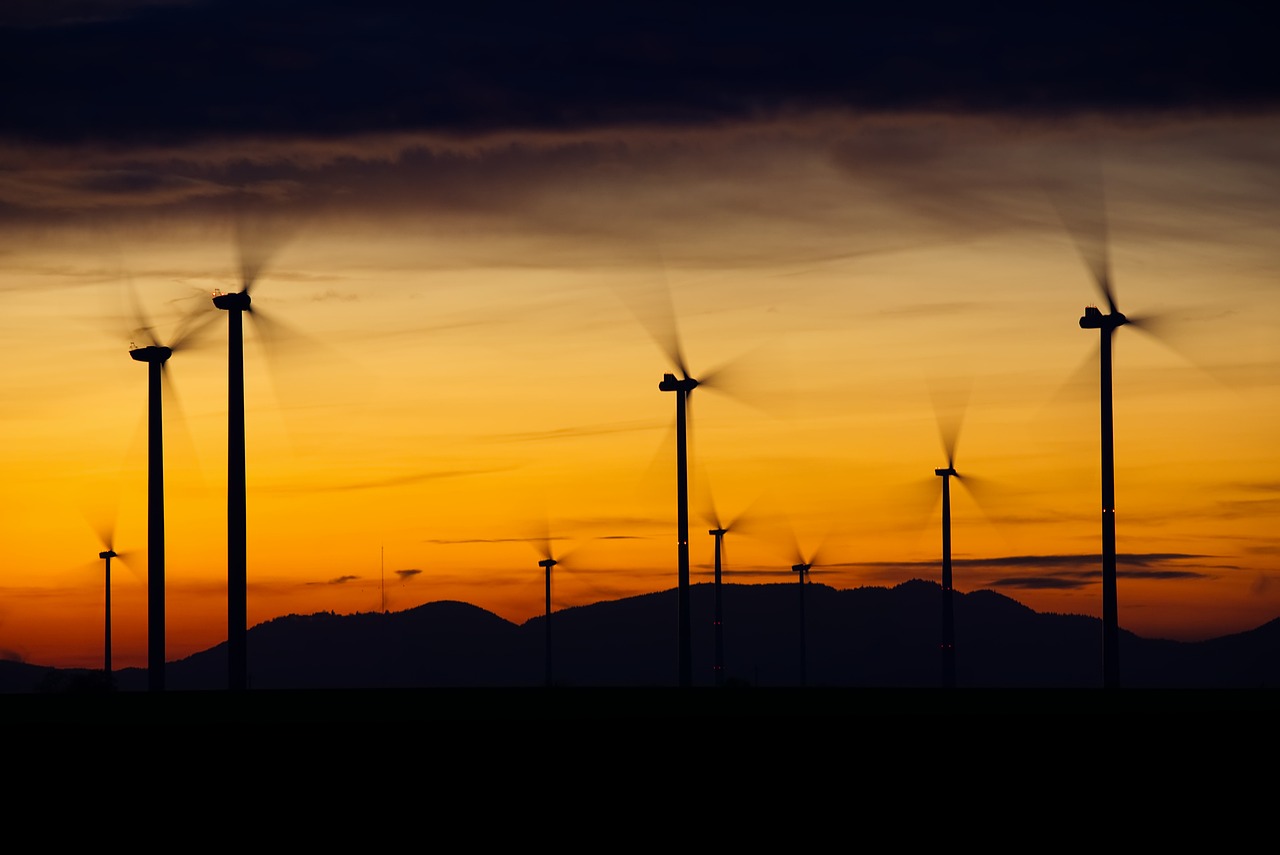
Off-Grid Solar Solutions
Imagine living in a remote area where the sun shines bright, yet you have no access to electricity. This is the reality for many communities around the world, but off-grid solar solutions are changing the game. These innovative technologies harness the power of the sun, providing energy independence to places that conventional energy grids often overlook. Off-grid solar systems typically consist of solar panels, batteries, and inverters, working in harmony to capture sunlight and convert it into usable electricity. This combination not only offers a reliable energy source but also enhances the quality of life for individuals and families.
One of the most significant advantages of off-grid solar solutions is their ability to empower communities. By providing access to electricity, these systems can transform lives in various ways. For instance, children can study at night, healthcare facilities can operate essential equipment, and local businesses can thrive with a steady power supply. In essence, off-grid solar solutions serve as a lifeline, enabling communities to break free from the shackles of energy poverty.
Furthermore, off-grid solar solutions are particularly beneficial in areas where traditional energy infrastructure is either too costly or impractical to implement. They can be installed quickly and scaled up as needed, making them an ideal choice for remote or rural locations. For example, a small village can start with a few solar panels to power essential services and gradually expand its solar capacity as the community grows and its energy needs increase.
However, it's essential to recognize that while off-grid solar solutions offer numerous benefits, they also come with challenges. Initial setup costs can be a hurdle for many communities, requiring innovative financing solutions to make these technologies accessible. Additionally, maintenance and technical support are crucial for ensuring the longevity and efficiency of solar systems. Community training programs can play a vital role in addressing these issues, empowering locals to manage and maintain their energy systems effectively.
To illustrate the impact of off-grid solar solutions, consider the following table that summarizes some successful implementations worldwide:
| Project Name | Location | Impact |
|---|---|---|
| Solar Sister | Africa | Empowers women entrepreneurs to sell solar products, improving access to energy. |
| Solar Home Systems | Bangladesh | Over 4 million homes powered, enhancing education and health services. |
| Little Sun | Global | Provides affordable solar lamps to off-grid communities, improving safety and productivity. |
In conclusion, off-grid solar solutions represent a beacon of hope for communities grappling with energy poverty. By leveraging renewable energy, these systems not only provide electricity but also foster economic growth, enhance educational opportunities, and improve overall quality of life. As we continue to innovate and invest in these technologies, the potential to eradicate energy poverty becomes increasingly tangible.
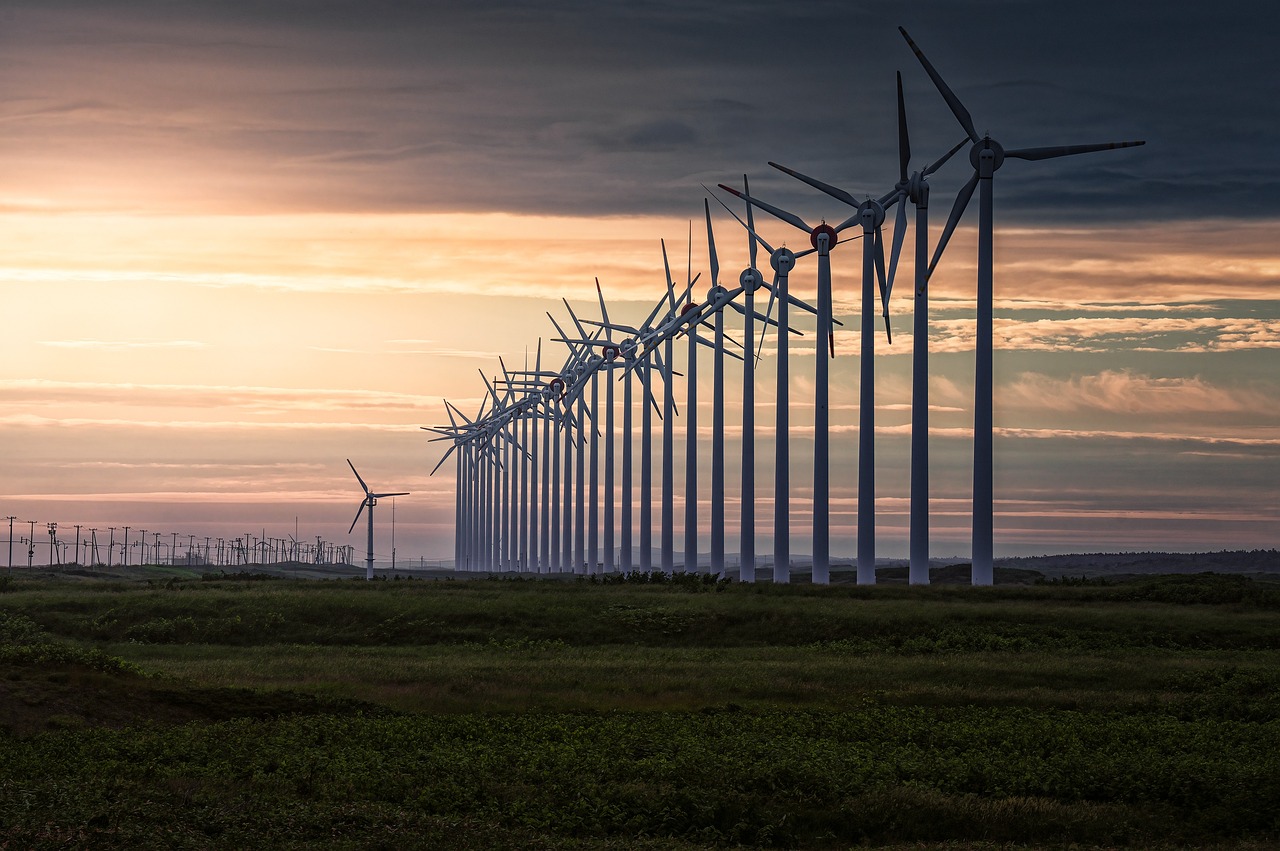
Wind Energy Applications
Wind energy is rapidly emerging as a game-changer in the fight against energy poverty. With its ability to harness the natural power of the wind, this renewable energy source presents a feasible solution for generating clean, affordable electricity, especially in regions where traditional energy infrastructure is lacking. Imagine a community where the sound of whirring turbines replaces the noise of diesel generators—this is not just a dream; it’s becoming a reality in various parts of the world.
One of the most significant advantages of wind energy is its scalability. Wind farms can be developed in a range of sizes, from large utility-scale projects to smaller distributed systems that can serve local communities. This flexibility allows for tailored solutions that meet the specific needs of different regions. For instance, in rural areas with vast open spaces, large wind farms can produce substantial amounts of electricity, while smaller wind turbines can be installed in urban settings or on individual properties, providing localized energy solutions.
Moreover, wind energy projects can create job opportunities and stimulate local economies. The construction and maintenance of wind farms require a skilled workforce, which can lead to the development of new training programs and employment opportunities for local residents. This not only addresses energy poverty but also contributes to economic growth, creating a virtuous cycle of development. For example, a wind project in a remote village can provide not just electricity, but also jobs in construction, operation, and maintenance, thereby elevating the community's overall standard of living.
However, the implementation of wind energy solutions is not without its challenges. Factors such as geographical limitations, initial capital costs, and regulatory barriers can impede the establishment of wind projects. In many cases, the best wind resources are located in remote areas, far from existing power grids. This necessitates investment in infrastructure to connect these resources to the communities that need them most. Additionally, while the operational costs of wind energy are relatively low, the upfront costs can be a significant barrier for under-resourced communities.
Despite these challenges, the potential of wind energy to alleviate energy poverty is immense. For instance, countries like Denmark and Germany have successfully integrated wind energy into their national grids, demonstrating that with the right policies and investments, wind energy can provide a stable and sustainable energy supply. As technology continues to advance, we can expect even more efficient and cost-effective wind energy solutions to emerge, making it an increasingly viable option for energy-poor communities worldwide.
In conclusion, wind energy applications represent a promising avenue for addressing energy poverty. By leveraging the power of the wind, communities can gain access to clean, reliable electricity while also benefiting from economic growth and job creation. The journey towards a sustainable energy future is not without its hurdles, but with continued innovation and collaboration, wind energy can play a crucial role in transforming lives and communities.
- What is wind energy? Wind energy is the process of converting wind into usable electricity using wind turbines.
- How does wind energy help with energy poverty? Wind energy provides a sustainable and affordable electricity source, especially in areas lacking traditional energy infrastructure.
- What are the challenges of implementing wind energy solutions? Some challenges include geographical limitations, high initial costs, and regulatory hurdles.
- Can wind energy create jobs? Yes, the construction and maintenance of wind farms can create numerous job opportunities in local communities.
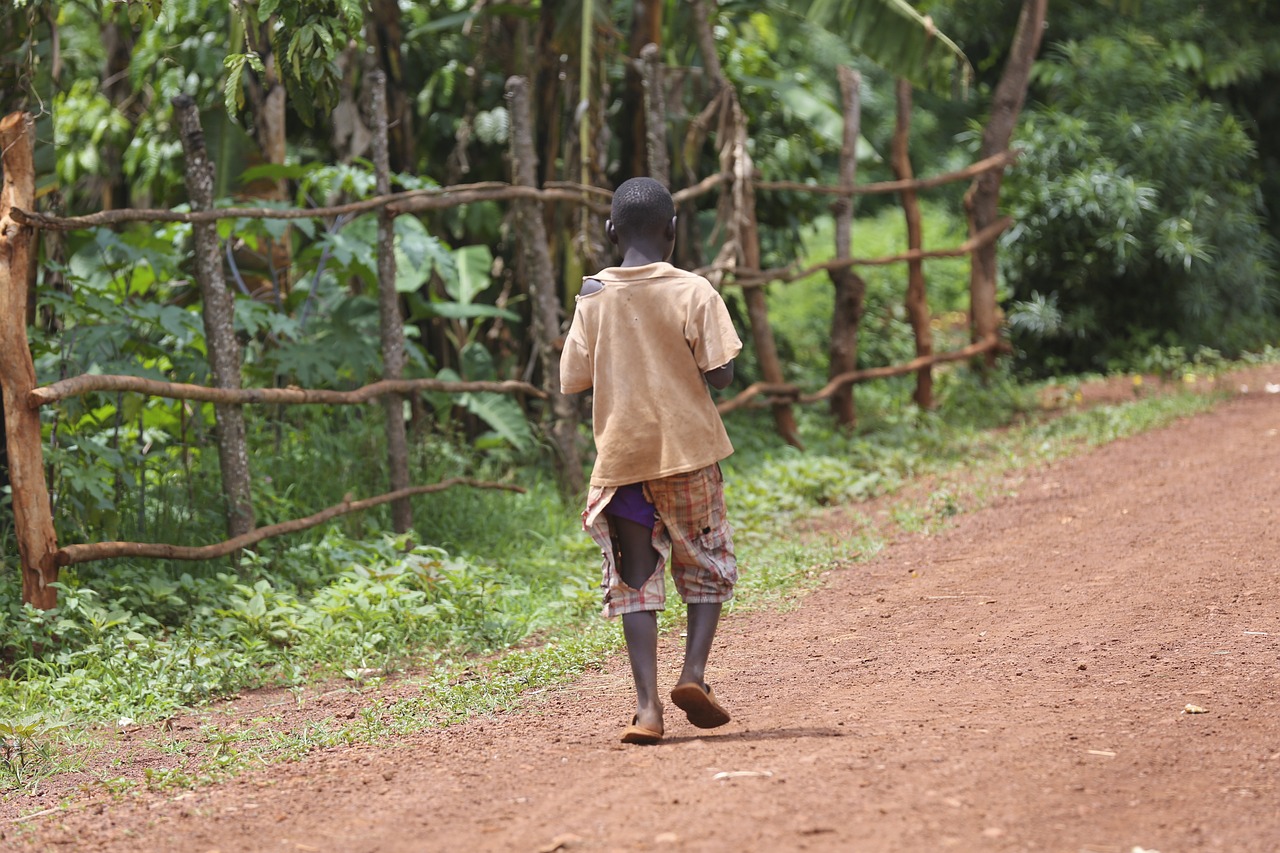
Barriers to Green Energy Adoption
Despite the clear benefits of green energy solutions, there are significant barriers that hinder their widespread adoption. One of the most pressing issues is financial constraints. Many communities facing energy poverty often lack the necessary funds to invest in renewable technologies. This can create a vicious cycle where the inability to pay for initial setup costs prevents access to sustainable energy sources, perpetuating their poverty. Innovative financing models, such as microloans or community funding initiatives, can help bridge this gap, but they require robust support from both governmental and non-governmental organizations.
Another crucial barrier is the lack of infrastructure. In many rural or underserved areas, the existing energy infrastructure is outdated or non-existent. This lack of infrastructure makes it difficult to implement new green energy solutions like solar or wind farms. For instance, without reliable grid connections, even the most advanced solar panels cannot provide consistent energy supply. Thus, investment in infrastructure is essential to facilitate the transition to renewable energy sources.
Furthermore, regulatory hurdles pose significant challenges. In many regions, the policies governing energy production and consumption are outdated or do not favor renewable energy initiatives. Complex permitting processes and lack of incentives can discourage potential investors from pursuing green energy projects. For example, if local governments do not provide tax credits or subsidies for renewable energy installations, it becomes less appealing for businesses and communities to invest in these technologies. Supportive policies and streamlined processes can make a world of difference in promoting green energy adoption.
To illustrate the impact of these barriers, consider the following table that summarizes the main challenges and potential solutions:
| Barrier | Description | Potential Solutions |
|---|---|---|
| Financial Constraints | Limited funding for initial investments in green energy technologies. | Microloans, grants, and community funding initiatives. |
| Lack of Infrastructure | Outdated or non-existent energy infrastructure in rural areas. | Investment in local infrastructure and grid improvements. |
| Regulatory Hurdles | Complex policies that discourage renewable energy investments. | Supportive policies, tax incentives, and streamlined permitting processes. |
In summary, overcoming these barriers is essential for promoting green energy solutions in energy-poor communities. It requires a concerted effort from policymakers, financial institutions, and local communities to create an environment that fosters innovation and investment in sustainable energy. By addressing these challenges, we can pave the way for a brighter, greener future for all.
- What is energy poverty? Energy poverty refers to the lack of access to essential energy services, which affects millions of people worldwide.
- How can green energy solutions help? Green energy solutions, such as solar and wind power, provide sustainable alternatives that can reduce dependency on fossil fuels and lower energy costs.
- What are the main barriers to adopting green energy? Key barriers include financial constraints, lack of infrastructure, and regulatory hurdles that can impede progress.
- What can communities do to overcome these barriers? Communities can seek innovative financing options, advocate for supportive policies, and invest in infrastructure improvements to facilitate green energy adoption.

Financial Challenges
When it comes to tackling energy poverty, one of the most daunting hurdles is the that many communities face. Imagine a family living in a remote village, struggling to pay for basic energy needs while simultaneously trying to afford food and education. This is the harsh reality for millions around the globe. The cost of transitioning to green energy solutions can be quite high, and without adequate funding, these projects often remain just that—dreams.
Many regions lack the financial resources necessary to invest in renewable energy infrastructure. Traditional financing options may not be accessible, especially for low-income families or communities with limited credit histories. This creates a vicious cycle where energy poverty perpetuates economic instability, making it even harder for these communities to break free from reliance on costly and polluting fossil fuels.
However, there are potential solutions to these financial challenges. Governments, NGOs, and private investors can play a crucial role in providing the necessary funding. Here are some innovative financing models that have shown promise:
- Grants and Subsidies: These can significantly lower the initial investment needed for green energy projects, making them more accessible to low-income communities.
- Microfinancing: Small loans can empower individuals to invest in solar panels or other renewable energy sources, allowing them to pay back the loan over time.
- Community Investment Funds: These funds can be established to pool resources from multiple stakeholders, enabling collective investment in local renewable energy projects.
Moreover, the role of public-private partnerships cannot be overstated. By collaborating, governments and businesses can share the risks and benefits of green energy projects, making them more viable for communities that need them the most. It's like a team sport—when everyone plays their part, the chances of success increase dramatically.
In addition, raising awareness about the long-term savings associated with renewable energy can also help overcome financial barriers. While the upfront costs may be intimidating, the savings on energy bills in the long run can be substantial, making green energy a financially savvy choice. It's essential to communicate these benefits clearly to communities struggling with energy poverty, allowing them to see the light at the end of the tunnel.
In summary, while financial challenges present a significant barrier to adopting green energy solutions, innovative financing models, partnerships, and education can pave the way for a brighter, more sustainable future. The journey may be tough, but with the right support and resources, communities can overcome these obstacles and thrive.
Q1: What is energy poverty?
A1: Energy poverty refers to the lack of access to essential energy services, which can hinder basic needs such as heating, cooking, and lighting.
Q2: How can green energy solutions help alleviate energy poverty?
A2: Green energy solutions like solar and wind power can provide affordable, sustainable energy alternatives to fossil fuels, making energy access more equitable.
Q3: What are some financial options available for communities facing energy poverty?
A3: Options include grants, microfinancing, and community investment funds, all aimed at lowering the financial barriers to adopting renewable energy.
Q4: Why is it important to address energy poverty?
A4: Addressing energy poverty is crucial for socioeconomic development, as it improves health, education, and overall quality of life for affected communities.

Policy and Regulatory Issues
When it comes to tackling energy poverty, play a pivotal role that cannot be overlooked. These issues often act as significant barriers to the implementation of green energy solutions, making it essential to understand how they function and what can be done to overcome them. The landscape of energy policy is complex, with various stakeholders involved, including government bodies, private sector players, and local communities. Each of these entities has its own interests, which can sometimes clash, leading to a stagnation in progress.
One of the primary challenges is the lack of supportive policies. Many countries still rely heavily on fossil fuels, and this dependency can create an environment where renewable energy initiatives struggle to gain traction. For instance, if there are no incentives for investing in solar or wind projects, businesses and individuals may be hesitant to take the plunge. This is where the importance of incentive structures comes into play. Governments can implement tax credits, rebates, or grants to encourage the adoption of renewable energy technologies.
Moreover, regulatory hurdles can create additional layers of complexity. For example, lengthy permitting processes can delay the development of renewable energy projects, making it harder for communities to access clean energy solutions. In many cases, these regulations are outdated and do not reflect the current technological advancements in the green energy sector. Streamlining these processes could significantly speed up the transition to renewable energy, allowing communities to benefit from cleaner, more sustainable power sources.
Another aspect to consider is the role of local governance. Local policies can either facilitate or hinder the adoption of green energy solutions. Community engagement is crucial; when local stakeholders are involved in the decision-making process, policies are more likely to align with the needs of the communities they serve. This involvement fosters a sense of ownership and can lead to more effective implementation of energy projects. For instance, community-led initiatives often have a higher success rate because they are tailored to the specific needs and resources of the local population.
To illustrate the impact of policy and regulatory issues on green energy adoption, consider the following table:
| Issue | Description | Potential Solutions |
|---|---|---|
| Lack of Incentives | Insufficient financial support for renewable energy projects. | Implement tax credits, rebates, and grants. |
| Regulatory Delays | Lengthy permitting processes slow down project development. | Streamline regulations and introduce fast-track approvals. |
| Local Governance Issues | Policies may not reflect community needs. | Encourage community engagement in decision-making. |
In conclusion, addressing the surrounding green energy adoption is crucial for alleviating energy poverty. By fostering supportive policies, streamlining regulations, and engaging local communities, we can create an environment where renewable energy solutions can thrive. This not only benefits those in energy-poor regions but also contributes to a more sustainable and equitable energy future for all.
- What are the main barriers to adopting green energy?
The main barriers include financial challenges, regulatory hurdles, and lack of supportive policies.
- How can local communities get involved in green energy initiatives?
Communities can engage in decision-making processes, advocate for supportive policies, and participate in community-led energy projects.
- What role do governments play in promoting green energy?
Governments can implement incentives, streamline regulations, and invest in renewable energy infrastructure to promote green energy adoption.

Future Outlook for Energy Poverty Solutions
As we look towards the horizon of energy poverty solutions, it becomes increasingly clear that the **future is bright** with possibilities. The convergence of technology, policy, and community engagement is paving the way for innovative approaches that promise to significantly alleviate energy poverty around the globe. Imagine a world where **every household** has access to reliable, clean energy; this vision is not just a dream but a tangible goal that we can achieve with the right strategies in place.
One of the most exciting trends is the rise of **decentralized energy systems**. These systems empower communities to generate their own energy, reducing reliance on traditional, centralized grids that often overlook remote and underserved areas. For instance, through initiatives like microgrids and community solar projects, neighborhoods can harness local resources—like sunlight and wind—to create their own energy independence. This not only fosters resilience but also encourages local economies to thrive.
Moreover, **technological advancements** are playing a crucial role in transforming the energy landscape. Innovations in battery storage, energy management systems, and smart grid technologies are making it easier and more cost-effective to harness renewable energy. With the **cost of solar panels** and wind turbines continuing to drop, the feasibility of implementing these technologies in low-income areas is becoming a reality. Additionally, as we embrace the Internet of Things (IoT), smart meters and sensors can optimize energy consumption, ensuring that even the most vulnerable populations can manage their energy use efficiently.
Partnerships between governments, non-profits, and private sectors are also essential in driving forward the agenda of energy equity. Collaborative efforts can lead to the development of **policy frameworks** that support renewable energy investments. By creating incentives, subsidies, and grants, these partnerships can significantly lower the barriers to entry for low-income households. For example, countries that have successfully implemented supportive policies have seen a marked increase in solar installations among low-income families, demonstrating that when the right conditions are set, change is possible.
However, while the outlook is promising, it is crucial to address some **persistent challenges**. Financial constraints remain a significant hurdle. Innovative financing models, such as pay-as-you-go solar systems and community funding initiatives, can help bridge the gap. These models allow families to access energy without the burden of upfront costs, creating a sustainable path towards energy independence.
In summary, the future of energy poverty solutions is not just about technology; it's about creating **inclusive systems** that empower communities. By leveraging innovative solutions, fostering collaboration, and addressing financial barriers, we can ensure that clean, reliable energy is accessible to all. As we move forward, it is essential to keep the conversation going, to share knowledge, and to build networks that can support this vital mission.
- What is energy poverty? Energy poverty refers to the lack of access to essential energy services, which affects millions of people worldwide.
- How can green energy solutions help? Green energy solutions, such as solar and wind power, provide sustainable and affordable alternatives to fossil fuels, helping to alleviate energy poverty.
- What are community solar programs? Community solar programs allow groups of people to invest in solar energy collectively, sharing the benefits and reducing costs for participants.
- What barriers exist to adopting green energy? Key barriers include financial constraints, lack of infrastructure, and regulatory challenges that can impede the growth of renewable energy initiatives.
Frequently Asked Questions
- What is energy poverty?
Energy poverty refers to the lack of access to essential energy services, which can severely impact people's quality of life. It affects millions worldwide, limiting their ability to heat their homes, cook food, or access electricity for lighting and appliances.
- How can green energy solutions help alleviate energy poverty?
Green energy solutions, such as solar, wind, and hydroelectric power, provide sustainable alternatives to fossil fuels. These technologies can offer affordable and reliable energy to underserved communities, helping to lift them out of energy poverty while promoting environmental sustainability.
- What are community solar programs?
Community solar programs allow groups of individuals or organizations to invest collectively in a solar energy project. This approach enables participants to share the benefits of solar energy, reducing costs and increasing access to clean energy for those who may not have suitable rooftops for solar panels.
- What are off-grid solar solutions?
Off-grid solar solutions are designed to provide energy independence for remote or underserved areas. These systems can operate independently of the traditional power grid, using solar panels and batteries to deliver reliable electricity to communities that lack access to conventional energy sources.
- What are the main barriers to adopting green energy solutions?
Several challenges hinder the adoption of green energy, including financial constraints, lack of infrastructure, and regulatory hurdles. Addressing these barriers is crucial to ensure that green energy solutions can be implemented effectively in energy-poor regions.
- How can financial challenges be overcome in green energy projects?
Financial challenges can be addressed through various means, such as securing grants, leveraging innovative financing models, and creating partnerships with organizations that support sustainable energy initiatives. These approaches can help fund projects that provide renewable energy to impoverished areas.
- What role do policies play in promoting green energy?
Supportive policies and regulations are essential for fostering the growth of green energy initiatives. Incentives, subsidies, and clear regulatory frameworks can encourage investment in renewable energy, making it more accessible and affordable for energy-poor communities.
- What does the future hold for energy poverty solutions?
The future of energy poverty solutions looks promising, with emerging trends in technology and collaborative partnerships paving the way for innovative approaches. By focusing on sustainable energy solutions and community engagement, we can make significant strides in addressing energy poverty worldwide.



















